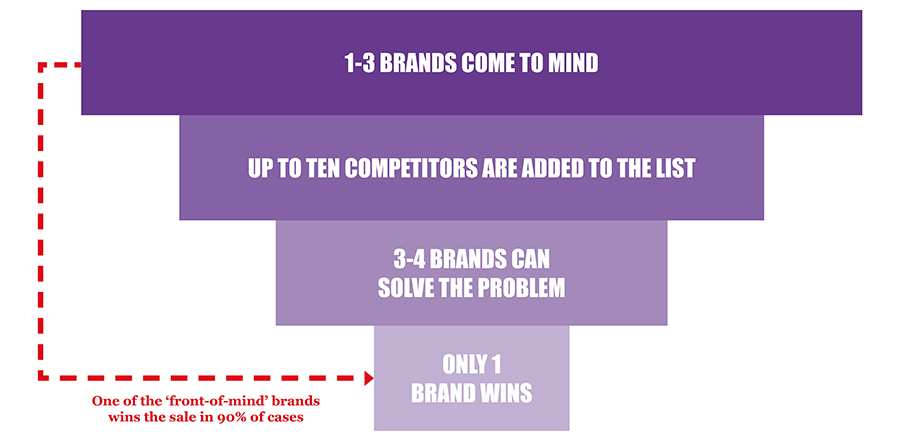In his keynote speech at the 2022 Cannes Lions Festival of Creativity, LinkedIn CEO, Ryan Roslansky, said “if I was going to start an agency today, B2B is exactly where I’d go. This is where the creative challenge is. It’s where the economic opportunity is. It’s where the money is going to be”.
In theory, his assessment should be right. Everything is pointing to this being a turning point for a category that has struggled to leverage marketing to its full potential for many years. In the history of the IPA Effectiveness Awards, only 2.5% have been B2B cases – a damning statistic.
The launch of The B2B Institute in 2019 has paved the way for a renaissance in B2B. It has commissioned several seminal research pieces from the likes of Binet & Field, The Ehrenberg-Bass Institute, Cannes Lions and The IPA that finally prove the key principles for marketing effectiveness in B2B. For the first time, B2B now has category-specific empirical evidence that (surprise, surprise!) points towards greater investment being needed in brand building and creativity.
Explosion in media channels open to B2B marketers
Additionally, the advancement in advertising technology over the last few years has resulted in an explosion in media channels that are now open to B2B marketers. Channels such as TV, audio and OOH, that were previously considered to be overly wasteful for niche B2B sectors, can now be bought in more targeted ways at a lower entry cost. Exciting? Absolutely. But the creative challenge that Ryan talked about is real. System 1 tested 1,600 B2B ads and found that 4 in 5 scored a 1-star or less in its rating system – meaning they contribute nothing to long-term market share growth.
It’s a complex issue that has developed over time, primarily driven by the lack of brand building channels available to many B2B sectors for so long. This has resulted in a deeply engrained culture where marketing is considered a support function for the sales department rather than a driver of business growth – and a proliferation of B2B agencies that have focused all their expertise on lead generation activity.
B2B organisations are simply not used to investing at the right level, in either media or the creative product, to effectively build their brands. So, when an economic downturn is putting many businesses on the defensive and marketing budgets at risk, how can B2B marketers convince senior stakeholders to shift their focus and invest more in brand building?
There are two ‘rules’ every B2B brand should look to
Professor John Dawes of The Ehrenberg-Bass Institute introduced a concept called The 95-5 Rule. He explains the simple fact that up to 95% of potential buyers are not in the market to buy a brand’s products or services at any given time. So, rather than focusing efforts on lead generation, B2B brands should be investing in brand-building communications that build mental availability – with the aim of being more salient when a buyer comes into market.
Many question why being front-of-mind is so important in category where so much research is done before a strategic purchase is made?
A study of 850 B2B case studies conducted by BBN called The Rule of Three in Every Purchase Decision, shows that when someone moves into buying mode, the first search engine they use is their head. Typically, one to three brands immediately come to mind that they think can solve their problem. And if you fast-forward to who they buy from, in 90% of cases they buy from one of the three brands that initially came to mind.

In a slower economy, with the number of in-market buyers reducing below 5%, brand building becomes even more important. Rather than doubling down on a smaller pot of sales opportunities, brands should be priming the vast pool of future buyers for when they do come into market during the economic recovery.
In times of economic downturn, it is also common for media costs to decrease. This makes it a rare window of opportunity for brands to exploit cheaper media and win share of voice at a much lower cost than in normal times – particularly if competitors are also reducing spend.
So, while a shift to a larger investment in brand may seem like a tricky conversation to have in times of economic uncertainty, all the evidence points to it being the right thing to do and it being a cost-effective time to do it. It’s an opportune time for B2B marketers to lay down a marker for a more effective approach to marketing and future growth.
IPA/B2Bi Guide to Writing a B2B Effectiveness Award Entry



